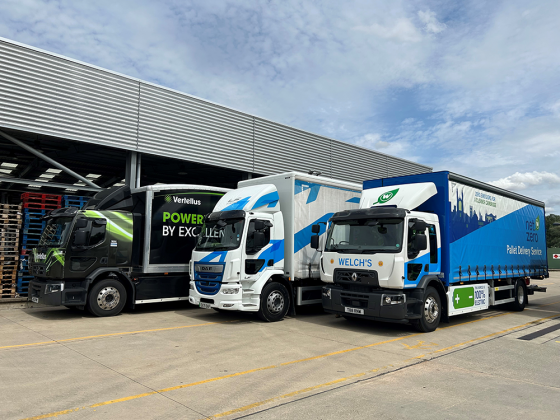Preparing for a breakdown
Make sure your employees are fully prepared in the event of a breakdown with these tips from road safety expert David Williams

The majority of UK motorists will have suffered some kind of breakdown situation in their lifetime, often due to lack of preparation or trying to cut corners. For companies with a fleet of vehicles it is even more important to ensure the vehicles are of the highest standards and that drivers are fully equipped to deal with a breakdown situation effectively, especially when planning work trips.
How To Prepare
During the recession many drivers have treated car maintenance as a low priority due to tight budgets and have tended to over-rely on the reliability of modern vehicles. It is extremely important particularly as part of a fleet, that companies and drivers realise the necessity to ensure cars have been fully checked before heading off on any journey.
The key to being prepared is getting to know the vehicle and ensure that it is regularly serviced as recommended by the manufacturer. Watch out for changes to the feel of the car, such as strange noises or smells and investigate. Never ignore warning lights and always make sure weekly checks are carried out as follows:
• Tyres – check condition and pressure (including spare)
• Battery – top up fluid level and check terminals for corrosion
• Oil level – between marks on the dipstick
• Coolant system – check fluid level
• Windscreen – clean windscreen and check wipers for wear
• Screenwash – check fluid level and nozzle adjustment
• Lights – keep lights clean and check for faults and cracked lenses
• Fuel – never allow the fuel level to get low. Fill up when the gauge reads less than half full
• Mirrors – keep clean and check for cracks
Monthly precautions include checking tyre tread for depth (minimum of 1.6mm) and uneven wear and checking the antifreeze fluid level, particularly in winter.
Before a long journey, the condition and pressure of tyres should be check, as should the lights, coolant, screenwash and oil levels.
These vital checks will go a long way to help prepare the vehicle for a journey but it is also important to always be prepared to handle a breakdown situation.
There are several essential items to keep in the vehicle; an up to date road map or sat nav, warm waterproof clothing, breakdown membership card, note pad and pencil, torch, manufacturer’s handbook, a number of hi-visibility reflective jackets/tabards (depending on number of passengers), a first aid kit, warning triangle, tow rope, mobile phone (not for use while driving or near fuel) and spare bulbs and fuses.
In the winter, keep an ice scraper, de-icer, a rug, wellington boots and a shovel in the vehicle.
In the event of a breakdown
If the vehicle breaks down, think about safety first; consider personal safety and the safety of the passengers and if possible get the vehicle off the road. Warn other road users by using hazard warning lights and if the vehicle is causing an obstruction put a warning triangle on the road at least 45 metres (147 feet) behind the broken down vehicle on the same side of the road, or use other permitted warning devices. Always take great care when placing them and never use them on motorways as this may be dangerous due to oncoming traffic.
It is imperative to keep the sidelights on if it is dark or visibility is poor and do not stand (or let anybody else stand) between your vehicle and oncoming traffic at night or in poor visibility. Always wear a fluorescent/reflective jacket or tabard and make sure that if there is a large number of passengers everyone must have one each.
Call for help immediately but do not use mobile phones if there is a danger from petrol spillage or fumes. Contact the emergency services by dialling 999 or 112 (international emergency code) and/or your breakdown recovery operator. Make sure clear instructions are given including; road number, general location, direction of travel together with specific local land marks, vehicle type, registration number, how many persons are in the vehicle and an indication of the cause of the breakdown. When help arrives they will ask for proof of identity so keep this in the vehicle at all times.
Breaking down on a motorway
When travelling on a motorway there are additional important steps to remember when dealing with a breakdown situation.
Always try to leave the motorway at the nearest exit or pull into a service area. When this is not possible, think safety first, and use the indicators or hazard warning lights and pull on to the hard shoulder. Stop as far to the left as possible, with the wheels of the vehicle turned to the left facing away from the traffic. Try to stop near an emergency telephone (every mile on the hard shoulder) and leave the vehicle by the left-hand doors. Do not try to cross the carriageway at any time and keep the passengers well away from the carriageway. Never attempt even simple repairs and do not leave the bonnet open at any time.
Give instructions to the passengers to remain behind the barrier on the motorway embankment and follow the arrows on the posts (every 100m) at the back of the hard shoulder to the nearest emergency telephone – calls are free and connect directly to the police. Alternatively you can use a mobile phone. Give full details, and also inform them if there is a large group. When rejoining the motorway, always increase speed on the hard shoulder and watch for a safe gap in the traffic.
Same rules apply
Whether travelling for business or leisure purposes the same rules apply and it is crucial that companies with a fleet of vehicles ensure every single one is checked to the highest standards. There is nothing worse than breaking down on a work trip or on the way to an important meeting due to lack of preparation. Breaking down in a large group can also be dangerous and difficult to manage, but with the right breakdown cover offering an efficient service it should be as painless as possible.
FOR MORE INFORMATION
GEM Motoring Assist has a free information guide “Motorist Breakdown and Emergency Guide” which is available free of charge by visiting www.motoringassist.com/leaflets.
ABOUT THE AUTHOR
David Williams is CEO of GEM Motoring Assist (formerly the Guild of Experienced Motorists), an organisation that is not only committed to providing high quality breakdown assistance but aims to improve safety for all road users.
David has spent much of his career working as road safety officer in local government where he has made a name for himself.
In 1985 he was elected as National Chairman of the Institute of Road Safety Officers and in 1987 he was appointed road safety adviser to
the Guild of Experienced Motorists. He became involved in a variety of national strategies and was a member of the government's road safety
publicity panel. He also gained the status of Fellow of The Institute of Road Safety Officers.
In 1994 he was elected Chairman of the Association Of Industrial Road Safety Officers and in 1998 was awarded an MBE for services to road safety.
He has been a member of The Parliamentary Advisory Council for Transport Safety for over 20 years.






